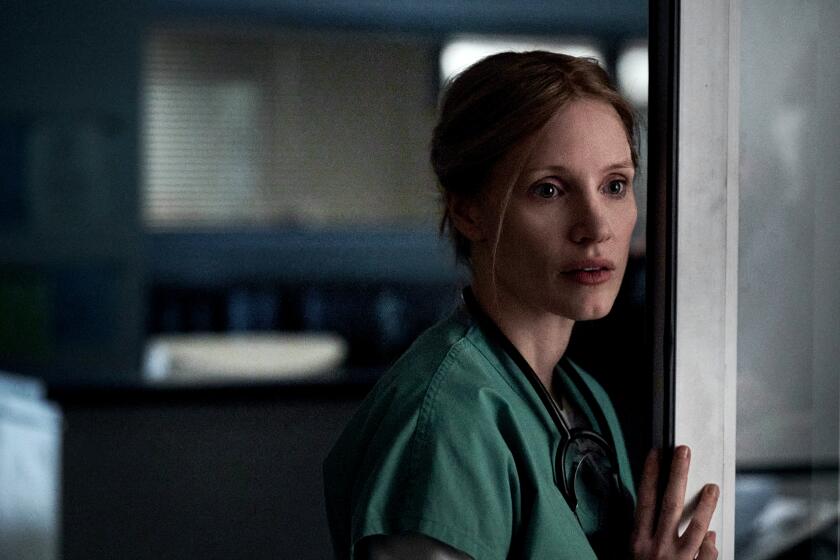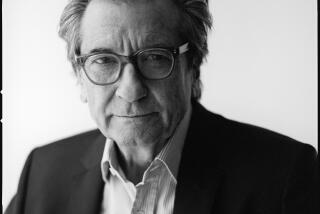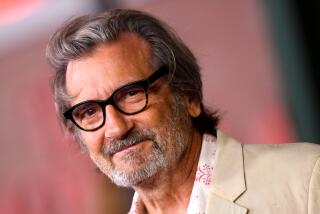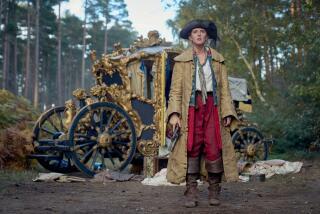Jessica Chastain, Eddie Redmayne aim for utter authenticity in true-crime saga ‘Good Nurse’

“The Good Nurse” tells the true story of Charles Cullen, a seemingly empathetic New Jersey nurse who was later revealed to be a serial killer. But instead of a tawdry potboiler, this adaptation of Charles Graeber’s 2013 true-crime book is a fragile drama about the friendship between Charlie and one of his co-workers, a lonely, ailing single mother named Amy Loughren, who thought she’d found in this kindly stranger a support system and a confidant.
Amy befriends the new hire, in part, because she recognizes in Charlie the same warm, nurturing manner she herself exudes around her patients. But like the viewer, Amy is seeing only one aspect of this sweet, soft-spoken man: She’s not aware he’s secretly injecting lethal drugs into saline bags, resulting in a series of mysterious deaths at the hospital.
The film had been in development for several years, and for that entire time its two stars were determined to stay on the project. No matter how dark the material — and no matter how hard it was to align their schedules — Eddie Redmayne and Jessica Chastain wouldn’t let “The Good Nurse” go.
“I don’t know that in Hollywood that a movie’s been around for six years and all the main players stayed on and no one got replaced or abandoned ship,” Chastain says proudly.
The two actors are relaxing in a suite at the London West Hollywood, reflecting on the effort it took to bring the movie to fruition. From the start, they agreed they wouldn’t do it without each other — or “A Hijacking” director Tobias Lindholm, knowing he’d insist on utter authenticity for this portrait of working-class life and America’s dysfunctional healthcare system. (He even made his stars attend nursing school.)
Screenwriter Krysty Wilson-Cairns, director Tobias Lindholm and author Charles Graeber explain how ‘The Good Nurse’ told a 16-year story in two hours.
And just as Amy and Charlie grow close over the course of the film, forming a surrogate family of sorts with her kids, a similar tight connection developed between the stars during the shoot, which took place at the tail end of the pandemic. “Jess and I both have young families,” says Redmayne, “and Jess and her husband were very sweet at introducing us to people in New York and Connecticut. Even though the subject matter was intense, it was also enjoyable — we did have wonderful weekends.”
The Netflix film is told from Amy’s perspective, observing as she grinds away on the night shift at her local ICU. As part of her research, Chastain spent time with the real Loughren, curious to know more about cardiomyopathy, a serious condition that forced Loughren to seek a heart transplant. But Chastain also hoped to gain insights into the woman’s psyche, which ended up making the story personal for her.
“I asked her, ‘Why did you choose to be a night nurse?’” Chastain recalls. “I thought she might say, ‘Oh, the money’s better.’ Instead, [it’s] because she’s a single mom: ‘I wanted my girls to think that they had a stay-at-home mom.’ I was raised by a single mom, and [I responded to] this idea that this woman is working all night taking care of others — she goes home, she gets to sleep a little bit when her kids are at school, does grocery shopping, laundry, housework, and then takes care of them when they’re out of school. Then she’s back at work — there’s no moment where she’s really taking care of herself. It’s crazy that this woman who needed a heart transplant has the biggest heart in the world.”
“The Good Nurse” is ostensibly a thriller, but Lindholm fought the clichés of the serial-killer genre, leaving Charles Cullen’s motivations intentionally opaque — a decision Redmayne found riveting. “The last third [of the book] is our story in the film,” says Redmayne. “But the other two-thirds are his background.” It was there that he began to understand the extent of Cullen’s brutal upbringing — Cullen was abused by his sister’s partner, lost his mother in a car accident when he was in his teens, and survived at least one suicide attempt.
But finding the right balance of menacing and benign took Redmayne a while, not just for his own performance but also in terms of never letting the audience think that Amy is foolish for trusting Charlie. “We all three talked about this,” says Chastain, protective of Loughren. “I said, ‘You guys have got to help me out here, because Amy’s not an idiot. If I see something that’s weird [about Charlie], I’m not letting that guy around my kids.’”
The trick for Redmayne was making Charlie placid, merely hinting at the torment underneath. “When you look closely, he is self-soothing,” Redmayne says about studying footage of Cullen. “[He’s] touching the fabric of his clothes or feeling the back of his hair, his ear lobes.” Redmayne illustrates all this as he speaks. “The traumatized 7-year-old was something that I tried to just make sure was in me in all moments.”
Eventually, though, Charlie will explode, the character’s ugliness spewing out in the film’s final sequences. To get there, Redmayne returned to a high-profile role from his youth.
“One of my first ever jobs was with a film that Robert De Niro directed [‘The Good Shepherd’],” he relates. “He had this way of directing emotional scenes [where] he would keep the camera rolling — you would get to the end of the scene, and he would ask you to go straight back to the [top]. It was a way of building up the textures, the layers. If a scene allows you to start in a broken place and just get more broken, it’s an interesting and helpful technique. And so I asked Tobias if we could do that.”
Redmayne recalls that “we did lots of takes” of the rawest scene in “The Good Nurse,” in which Charlie has been arrested and is grilled by authorities. Crucially, the volcanic sequence was held until the end of production. “It was a long, long day,” he says. “Those were 10-, 15-minute takes. But there was a release to it after having played a character so suppressed for months.”
Chastain remains moved by an inherent contradiction within Loughren: “She put Charlie behind bars, but she loved him,” she says. The actress’ sympathetic chemistry with her co-star sells that contradiction. But for Redmayne, “The Good Nurse” is a far cry from the spectacle of the “Fantastic Beasts” films that have occupied much of his time recently. Was it hard to shift into a quieter register?
“I love making those huge symphonic films,” he says of the Harry Potter prequel franchise. “I love that company of actors — it’s old-school filmmaking of scale. But because of the nature of them, retaining intimacy is hard.” By comparison, the close-quarters experience of “The Good Nurse” allowed him to “mine scenes for everything that they’re worth to try every possible alternative.”
He smiles. “That was wonderful. It was delicious. It was what I was dreaming of.”
More to Read
From the Oscars to the Emmys.
Get the Envelope newsletter for exclusive awards season coverage, behind-the-scenes stories from the Envelope podcast and columnist Glenn Whipp’s must-read analysis.
You may occasionally receive promotional content from the Los Angeles Times.








